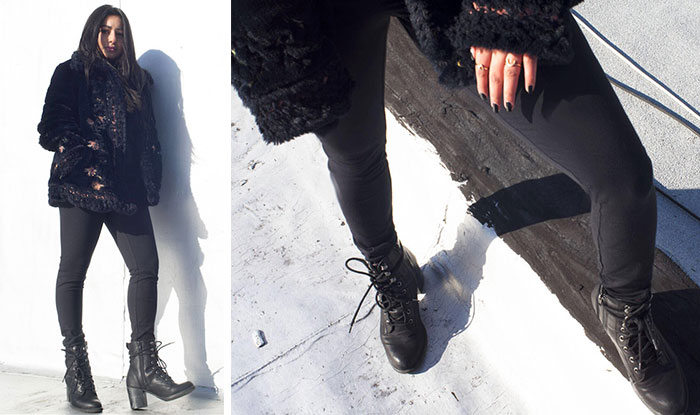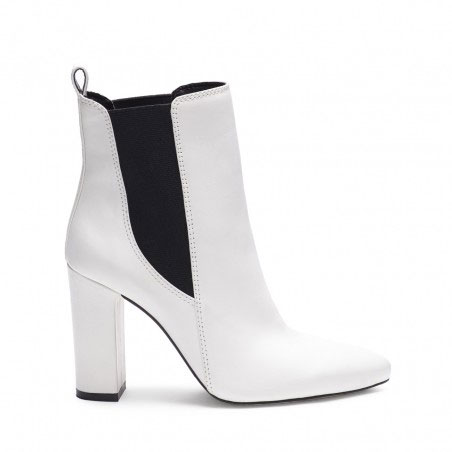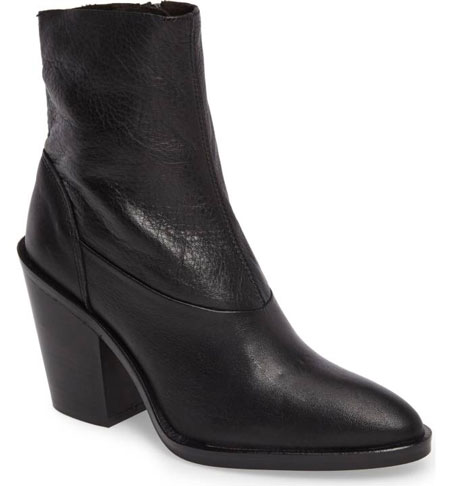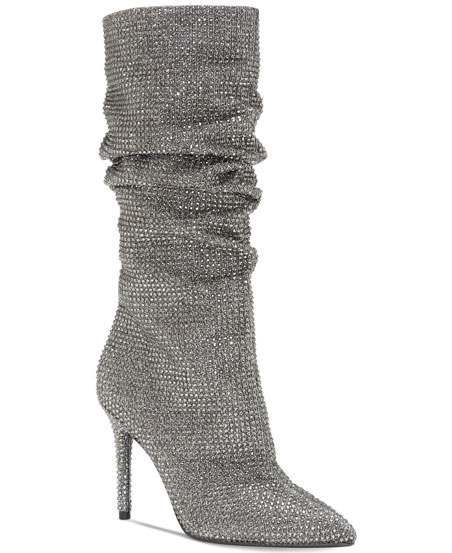
by Sanjana Arefin – Follow @minfin_
It’s officially fall, so you know what that means: It’s time to step up your fashion game and start thinking about fur coats, scarves, and oversized knits. But what are we most excited about? Fall boots, and fall boot trends, of course!
Before you get your seasonal shopping list together, consider investing in some of these trendy, yet affordable, pairs of statement boots that will turn heads and compliment your fall ‘fits.
[Read Related: The White Pumps: Project Rewearability]
The White Bootie
Investing in a pair of white shoes can be a bit intimidating, but it shouldn’t be. You may think that white will be hard to wear, especially in the fall, but a cute pair of white fall boot will go well with most outfits. Pair them with cuffed boyfriend jeans or wear them with an all-black outfit and you’ll be sure to make a statement. Invest in these Vince Camuto Britsy gored booties, in white, for added height and a polished look with its pointed toe.
 [Photo courtesy: Nordstrom]
[Photo courtesy: Nordstrom]
The Sock Bootie
Thank you, Yeezy for introducing the sock ankle boot trend. The silhouette of these boots is nothing but flattering. The shaft of a sock bootie is longer than your average bootie and the material is fitted around the ankle (like a sock, duh). Also, bonus points for the lengthening effects due to its slim fit. These are perfect to elevate any simple outfit to a more chic look. Also, they look incredible with short dresses! Add Topshop’s May Sock Bootie to your fall shopping list for a stylish and comfortable pair. These shoes are perfect addition to the fall boot trends this year, and definitely a fan favorite!
 [Photo courtesy: Nordstrom]
[Photo courtesy: Nordstrom]
The Combat Boot
Dare to be edgy this fall with combat boots. Believe it or not, these will look great with everything from leggings, jeans, to dresses. Juxtapose the utilitarian look of a combat fall boot with a cute floral dress or be motorcycle-chic with an all-black outfit and your favorite leather jacket. These boots are versatile and perfect for trekking through the snow. The Veronica Short Slouchy Boot by Frye will be your best friend this fall and winter. It’s soft supple leather will keep you comfortable throughout the chilly months ahead.
 [Photo courtesy: Nordstrom]
[Photo courtesy: Nordstrom]
The Sparkly Boot
Everyone in fashion is talking about the Saint Laurent Niki Crystal Boot that was spotted during Paris Fashion Week. At the price point of $10,000, they are a bit pricey, but we’ll opt for Jessica Simpson’s Layzer Slouchy Rhinestone Boots. These boots are stunning due to the slouchy styling, pointed heel, and of course the twinkling rhinestones. They may be somewhat flashy, but they are totally appropriate for holiday parties and to dress up the little black dresses that you love. Talk about a major statement piece!
 [Photo courtesy: Macy’s]
[Photo courtesy: Macy’s]
And there you have ladies, four of fall boot trends to add to your must-haves list ahead of your next shopping spree!
[su_divider]
 Sanjana Arefin is a content creator and social media expert currently working at a New York City-based beauty public relations agency. Due to her love of the arts and all things beauty, while completing her BA from Stony Brook University in Art History & Criticism, she simultaneously worked for MAC Cosmetics. Sanjana’s true passion involves bridging gaps between the art and fashion world, and to increase more awareness of the arts. During her free time, you can catch her binge-watching South Park in her Williamsburg apartment, frolicking through the East Village, or at the Metropolitan Museum of Art when she’s not working full-time in beauty marketing. If you have any beauty and/or art related questions, please contact her at sanjanaarefin.com.
Sanjana Arefin is a content creator and social media expert currently working at a New York City-based beauty public relations agency. Due to her love of the arts and all things beauty, while completing her BA from Stony Brook University in Art History & Criticism, she simultaneously worked for MAC Cosmetics. Sanjana’s true passion involves bridging gaps between the art and fashion world, and to increase more awareness of the arts. During her free time, you can catch her binge-watching South Park in her Williamsburg apartment, frolicking through the East Village, or at the Metropolitan Museum of Art when she’s not working full-time in beauty marketing. If you have any beauty and/or art related questions, please contact her at sanjanaarefin.com.




